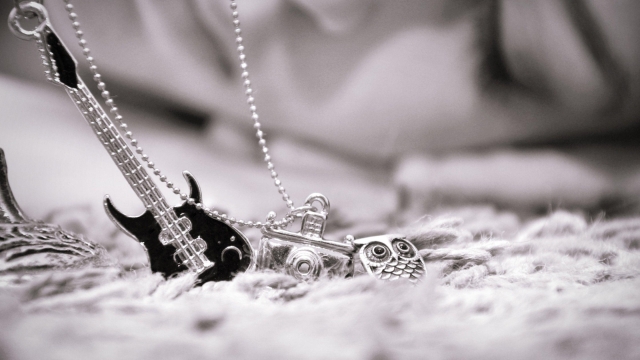
Home appliances are the unsung heroes of our daily lives, making chores quicker and more manageable. Yet, when they malfunction, it can throw our routines into disarray. Instead of rushing to call a repair technician or replacing the appliance altogether, consider taking matters into your own hands. With a bit of knowledge and some basic tools, you can tackle repairs on common home appliances such as washers, dryers, refrigerators, dishwashers, ovens, and garbage disposals.
Mastering home appliance repair not only saves you money but also empowers you to maintain your household more effectively. In this guide, we will explore practical tips and tricks for diagnosing issues and performing repairs, turning you into the DIY expert that every home needs. Whether you’re dealing with a washer that won’t spin or an oven that won’t heat, we’ve got you covered with step-by-step instructions to get your appliances back in working order.
Washer Repair Basics
When it comes to repairing a washer, the first step is to identify the issue at hand. Common problems include excessive noise during operation, failure to drain, or leaks. It’s important to troubleshoot effectively, which often begins with listening to the sounds the washer makes and observing its behavior. Many issues can be traced to simple problems, such as clogged filters or damaged hoses, which are easy to fix and do not require professional intervention.
Safety should always be a priority when working on your washer. Make sure to unplug the appliance before starting any repairs to prevent electric shock. Additionally, ensure that you have the necessary tools on hand, including screwdrivers, pliers, and a multimeter if you need to check electrical components. Familiarizing yourself with the washer’s manual can provide valuable insights into its parts and functions, making your repair efforts more efficient.
Once you’ve addressed the initial concerns, it’s essential to perform regular maintenance to avoid future problems. This includes cleaning the drum, checking hoses for wear, and ensuring that the detergent drawer is free of residue. Regular maintenance not only prolongs the life of your washer but also improves its performance, ensuring that it serves you well for years to come. Taking a proactive approach can save both time and money in the long run.
Dryer Troubleshooting Tips
If your dryer is not getting your clothes dry, the first step is to check the lint filter. A clogged lint filter can restrict airflow, causing the dryer to work inefficiently. Pull out the filter and clean it thoroughly under warm water to remove any residue. Also, inspect the venting system that directs hot air outside your home. Ensure that it is free of blockages and that it is venting properly.
Another common issue is the dryer not starting at all. First, make sure the door is fully closed, as most dryers won’t operate with an open door. Next, check that the dryer is plugged in and that the outlet is functioning. If you suspect a power issue, try plugging another appliance into the outlet to see if it works. If not, check your circuit breaker for any tripped switches.
Finally, if your dryer is making unusual noises, this could indicate a problem with the drum rollers or the belt. To investigate, unplug the dryer and remove the front or back panel, depending on your model. Look for signs of wear or damage on the belt and rollers. If you notice any fraying or excessive wear, it may be time to replace these parts for quieter and more effective operation.
Refrigerator Maintenance and Fixes
Keeping your refrigerator running efficiently is crucial for food preservation and energy savings. Regular maintenance includes cleaning the condenser coils, which are often located at the back or beneath the appliance. Dust and debris can accumulate over time, forcing the fridge to work harder and potentially leading to breakdowns. Simply unplug the unit and use a vacuum or brush to remove any build-up, ensuring your refrigerator operates at peak performance.
Another important aspect of refrigerator care is checking the door seals. Damaged or dirty seals can cause cold air to escape, making the unit less efficient and ultimately leading to spoilage of stored items. Inspect the rubber gaskets for cracks or tears and clean them with soapy water. If they are beyond repair, replacing them is a straightforward task that can significantly improve energy efficiency and cooling performance.
Miami refrigerator repair specialist near me
If your refrigerator is not cooling properly despite maintenance, a few common fixes might do the trick. Start by inspecting the temperature settings and ensuring they are correctly adjusted. Additionally, check the airflow inside by ensuring that air vents are not blocked by food items. If the issue persists, it may be time to inspect the thermostat, evaporator fan, or even the compressor, as these are critical components that could influence overall functionality.
Dishwasher Common Issues
One of the most common issues homeowners face with dishwashers is poor cleaning performance. When your dishes come out dirty or stained, it can often be attributed to clogged spray arms or a malfunctioning filter. To address this, remove the spray arms and clean out any debris that may be blocking the water flow. Additionally, check the filter and rinse it under hot water to remove any buildup. Regular maintenance can prevent these problems and ensure your dishwasher cleans effectively.
Another frequent complaint is water leakage. This can occur for several reasons, including worn door seals, improper loading, or a broken hose connection. Start by inspecting the door gasket for signs of wear or damage, as a faulty seal can allow water to escape during cycles. Be sure to load the dishwasher according to the manufacturer’s guidelines to avoid blocking the spray arms, which can also lead to leaks. If you identify a hose issue, tighten or replace the hose as necessary to prevent further leaks.
Lastly, strange noises during operation can be a source of frustration. If you hear rattling, grinding, or buzzing sounds, it might indicate foreign objects trapped in the impeller or spray arm. Check for anything stuck in these parts and remove it. Another possibility is a malfunctioning motor or pump, which could require more in-depth inspection or replacement. By addressing these noises promptly, you can avoid potential damage to your appliance and keep your dishwasher running smoothly.
Oven and Garbage Disposal Repair
When it comes to repairing your oven, understanding the common issues can save you both time and money. One frequent problem is the heating element failing, which might cause your oven to not heat up at all. To troubleshoot, begin by checking if the element has any visible blisters or breaks. If it does, replacing it is usually straightforward—just make sure the power is turned off before you begin. Additionally, if you notice uneven cooking, it could be due to a malfunctioning thermostat, which can be tested and replaced if necessary.
On the other hand, garbage disposals can be plagued by clogs or jams, which can disrupt your kitchen routine. Begin by turning off the power to the unit and inspecting for any visible obstruction. Using a hex key, most disposals have a manual reset feature that can help clear minor jams. If the unit hums but doesn’t spin, it might indicate that the motor is stuck. Don’t forget to press the reset button located on the bottom of the unit; this can help restore functionality in many cases.
Both ovens and garbage disposals require regular maintenance to prevent more significant issues down the line. For ovens, keep the interior clean and periodically check for wear and tear on components. Regularly use the disposal by running cold water through it while in operation to ensure food particles do not accumulate. By staying proactive and attentive to these appliances, you can extend their lifespan and maintain a smoothly functioning kitchen.

